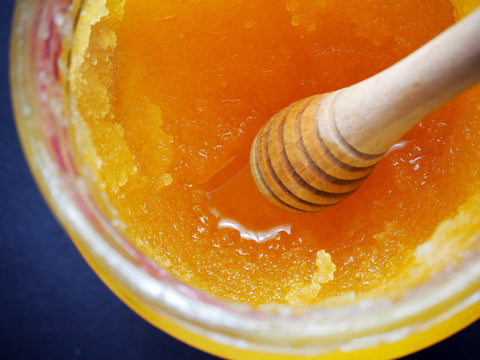Ah, spring! Time to revisit the "birds and the bees" - but don't take the bees as a role model for your own pursuit of passionate embraces.
Do you think you have a rough love life? You're lucky that you are not a honeybee drone. Not only is their chance of actually passing on their genetic code quite slim, but their chance of dying if they succeed is 100%!
The Drones
Each hive includes a Queen Bee, hundreds of thousands of female worker bees, and around 2,000 male bees, or drones, just hanging around and waiting for their lucky break. These layabouts do not make wax, gather pollen or honey, or do anything useful except wait for their chance to mate with a Queen!
The Queen
Each colony has one queen, and she is responsible for all of the egg-laying. Her Highness is a busy lady, so she only has a little time to schedule in her hanky panky! Once she reaches a week old, she prepares for her "nuptial flight."
The Date
Much like humans interested in finding a fling flock to nightclubs and bars, the drones gather in mating areas known as Drone Congregation Areas. On nice days, drones leave their hives, hang out at the special spot, and wait for Queens to arrive. You can find drones from many different hives waiting together at the DCAs. This variety of mates ensures a healthy genetic diversity among the surrounding hives.
When a queen is ready, she dolls up, leaves her hive in style, and flies out to find a DCA with around 20k drones patiently waiting for their day to shine.
The Flight
The queen bee tends to fly far away from her hive to find more drones that don't share her genetic stock. She makes a beeline to a promising group of drones, and the action begins immediately! The queen mates with as many drones as possible in one majestic, X-rated flight.
She might be a bit shagged out after that affair, but that's nothing compared to the effect it has on her multitude of lovers.
First, the drones catch her scent and start flying after the queen, creating an effect often called the drone comet. The strongest, fastest drone flies up to the queen, mounts her, and mates with her for a glorious two seconds before his endophallus snaps off with an audible pop! He plummets to the ground, paralyzed and dying, but probably with a smile on his face. Another fellow takes his place, and the dance begins again.
After a minute or so of this torrid affair, the queen has had enough and flies home with a full spermatheca. Her Majesty uses this organ to fertilize eggs while she lays them - up to 2,000 per day! While she can lay unfertilized eggs that will hatch into drones, she needs the sperm to create fertilized eggs that will become worker bees.
The drones who didn't get their chance with the queen will keep trying different drone congregation areas until they die from mating or old age at six weeks old. Drones that remain in the hives as the fall months arrive get kicked out to die by the worker bees to help preserve their precious resources.
If you want to read more about this astonishing process with images and research included, check out the book Bee Sex Essentials by Lawrence John Connor.
RESOURCES AND REFERENCES:
National Geographic: How Humans are Messing Up Bee Sex
https://www.nationalgeographic.co.uk/animals/2018/09/how-humans-are-messing-up-bee-sex
PBS.org: Striking Out in the Love Department? At Least You’re Not a Honey Bee. . .
https://www.pbs.org/wnet/nature/blog/striking-love-department-least-youre-not-honey-bee/
The Walrus and the Honey Bee: Bee Sex




